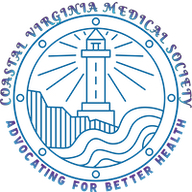And Surgeons
Barriers to Patient Care in Psychiatry

This is an essay about some of the problems facing psychiatrists currently. There are a host of difficulties. I will only enumerate below the matters I think are relatively uncontroversial, and comparatively serious.
The first is the problem of commitments. Civil commitment laws have been changed periodically since the 1960s. They are still far too limited, leading to unnecessary crime, homelessness, emergency rooms packed with violent, psychotic patients, and flooded family practitioners’ offices.
The second problem is the lack of psychiatric hospital beds. Many of the homeless should be hospitalized for long periods of time so they can be taken care of humanely, so they do not suffer, and so the public does not suffer either.
Again, in the 1960s and 70s, psychiatric hospitals were closed due to concerns about a “least restrictive environment” associated with patients’ civil rights. Civil rights are still important, but the pendulum has swung too far, and for this reason, all doctors, including psychiatrists, are hamstrung in being able to help very severely ill people and to protect the public. The laws need to be changed to give psychiatrists and lawyers more capacity to institute civil commitments.
The third matter has to do with insurance. Most insurance coverage for any kind of psychiatric care pays the physician less than a plumber, handyman service or an Uber driver. There’s something wrong with that picture. This problem may be impossible to rectify since “the horse has left the barn.” Nevertheless, it is almost universally agreed among psychiatrists that spending a max of 15 minutes with a patient and prescribe a psychotropic medication is far too limiting. Psychiatrists cannot get paid enough for a 45- or 50-minute psychotherapy session to survive in the United States economic environment.
The final matter that disturbs psychiatric practice in 2023 concerns malpractice liability. As it stands now, psychiatrists are responsible if any of their patients kill themselves or kill other people. It has been proven over and over for the past 50 years that psychiatrists cannot predict with any degree of certainty which patients are going to kill themselves (or kill other people), and who are not. We have a large amount of literature concerning how to try to assess suicidality in some sort of reasonable way, but all psychiatrists know that accuracy is not measurable. The laws should reflect this widely understood reality.
Professional liability for any patients who kill themselves or other people should be erased. This will allow many more psychiatrists than now to try to treat suicidal patients; as it stands, many psychiatrists have stopped accepting referrals of severely suicidal people because of the malpractice risk.
Those are some of the problems psychiatrists and their patients face. Life is full of challenges, and all of us need to live with them. But the bureaucratic difficulties impinging on the practice of Psychiatry seem to have become excessive.
Jerome S Blackman, MD
Board certified, Psychiatry
Board certified, Psychoanalysis
Virginia Beach, Virginia
Your Comments
Please add your comments or suggestions on any past or future events in the box below.
Newsletter
Stay up to date on issues and news you need to know. The CVMS Bulletin is published monthly and will list concerns that local physicians have expressed about healthcare in Coastal Virginia and how we can make it better. We will provide potential solutions and let you know what is happening behind the scenes to help solve these problems. Membership is not currently required to receive the newsletter.



Recent Articles
-
CVMS-Bulletin-November-2025
Nov 28, 25 08:23 AM
CVMS Newsletter - Medical News and Commentary -
CVMS Membership Drive 2025
Oct 16, 25 10:53 AM
Information about the membership importance and benefits. -
Letter to Governor Youngkin re: COVID-19 Vaccine Recommendations
Oct 16, 25 10:45 AM
The Honorable Glenn Youngkin
Office of the Governor
P.O. Box 1475
Richmond, VA 23218
Dear Governor Youngkin,
On behalf of the Coastal Virginia Medical Society (CVMS), based in the Hampton Roads area of Sou…
Sign Up for the New CVMS Bulletin
Things You Need to Know
News Releases
from the
Virginia Beach Health Department
Norfolk Public Health Department
Chesapeake Health Department
The Roman Fasces was a symbol of strength and power occurring as a result of many binding together. It was made of multiple elm or birchwood rods about 5 feet long tied together and sometimes including an axe. It was carried by attendants to soldiers or powerful figures in ancient Rome. For us, it symbolizes that we are stronger and more powerful if we bind together in supporting our goals.





